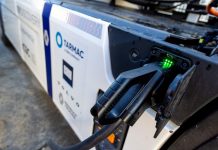The Government has unveiled its Transport Decarbonisation Plan, including an intention to phase out the sale of new diesel and petrol heavy goods vehicles (HGVs) by 2040, subject to consultation.
Under the proposals there will be a 2035 phase out date for vehicles weighing from 3.5 to 26 tonnes and 2040 for vehicles weighing more than 26 tonnes – or earlier if a faster transition is feasible.
It has also published a 2035 delivery plan, which brings together all of the measures for decarbonising cars and vans, from across government, into a single document.
This outlines the key timelines, milestones and how progress towards the commitment to deliver mass ownership of zero emission cars and vans will be monitored.
The government is also bringing forward the target date for the whole central government fleet of 40,000 cars and vans to be fully zero emission by 2027, three years earlier than previously planned.
In addition, it plans to lay legislation later this year to ensure that all new private EV charge points meet smart charging standards.
Elizabeth de Jong, Director of Policy at Logistics UK, said: “The Transport decarbonisation plan will help to provide logistics businesses with confidence and clarity on the steps they must take on the pathway to net zero.
“Consultation on proposed phase out dates for new diesel HGVs should enable business to move forwards with confidence.”
Gerry Keaney, BVRLA Chief Executive, added: “We welcome the publication of these plans, which provides a clearer picture of where we are and where we need to get to on the road to net zero.
“BVRLA members will play a vital role in this journey, enabling millions of individuals and businesses to embrace zero emission road transport and switch to more sustainable forms of mobility.”
Charlie Jardine, the CEO and Founder of EO, said: “Business vehicles account for 59% of traffic on UK roads and we know from our own experience that companies are progressing electrification plans at pace.
“That said, it’s crucial that the increasing number of EV drivers on the roads have a seamless charging experience and that goods and people can move about freely.
“For this to happen, the roll-out of public charge points needs to be fast and incentives for the installation of private charging infrastructure need to be potent.”



